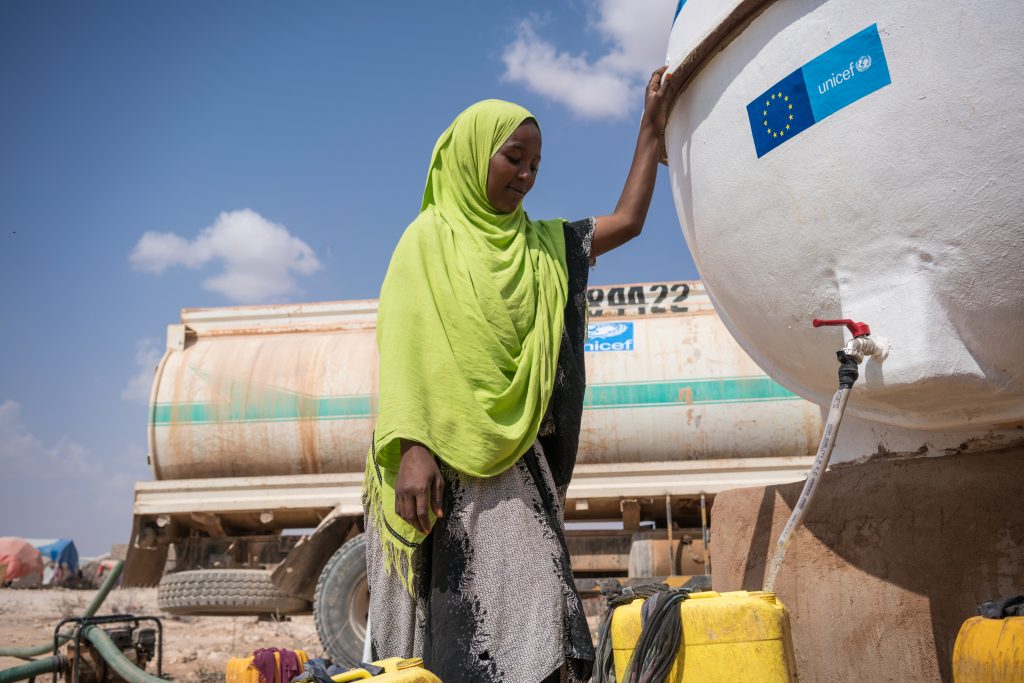Drought, famine and cholera/AWD (Acute Watery Diarrhoea) outbreaks have become recurrent in the Horn of Africa. Famine and cholera/AWD outbreaks in the Somali regions are often manmade. While there are environmental factors involved, such as decreased rainfall and decreased vegetation cover, the conflict is the main driver of the humanitarian emergency. Violence prevents people from accessing adequate water sources, displaces them to settlements with poor water and sanitation and impedes them reaching health care centres.
In addition, in a drought, water becomes scarce and pathogens accumulate in stagnant waters, and people and cattle are pushed to use these contaminated waters, sharply increasing the risk of a cholera/AWD epidemic. The purpose of this guidance note is to support UNICEF staff in understanding the contextual factors (the practices, behaviours, social norms and wider factors) that shape risks of cholera transmission, being able to separate the social and cultural factors from those that are more structural or systemic.



